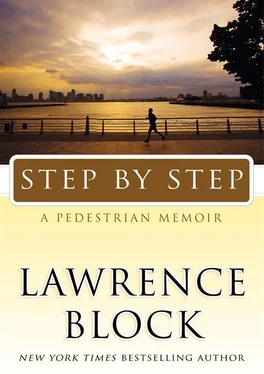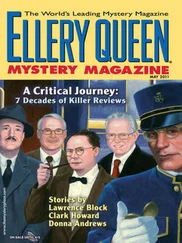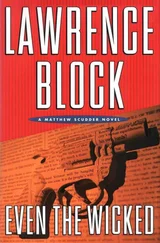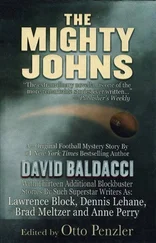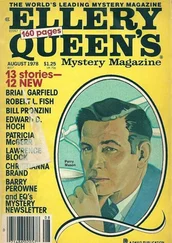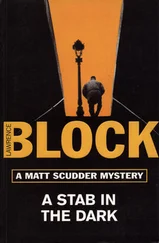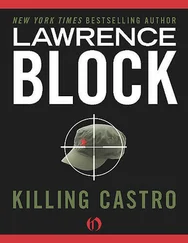Lawrence Block - Step by Step
Здесь есть возможность читать онлайн «Lawrence Block - Step by Step» весь текст электронной книги совершенно бесплатно (целиком полную версию без сокращений). В некоторых случаях можно слушать аудио, скачать через торрент в формате fb2 и присутствует краткое содержание. Год выпуска: 2009, ISBN: 2009, Издательство: William Morrow, Жанр: Биографии и Мемуары, Юмористические книги, на английском языке. Описание произведения, (предисловие) а так же отзывы посетителей доступны на портале библиотеки ЛибКат.
- Название:Step by Step
- Автор:
- Издательство:William Morrow
- Жанр:
- Год:2009
- ISBN:978-0-06-172181-6
- Рейтинг книги:3 / 5. Голосов: 1
-
Избранное:Добавить в избранное
- Отзывы:
-
Ваша оценка:
- 60
- 1
- 2
- 3
- 4
- 5
Step by Step: краткое содержание, описание и аннотация
Предлагаем к чтению аннотацию, описание, краткое содержание или предисловие (зависит от того, что написал сам автор книги «Step by Step»). Если вы не нашли необходимую информацию о книге — напишите в комментариях, мы постараемся отыскать её.
bestselling author comes a touching, insightful, and humorous memoir of an unlikely racewalker and world traveler.
Step by Step — читать онлайн бесплатно полную книгу (весь текст) целиком
Ниже представлен текст книги, разбитый по страницам. Система сохранения места последней прочитанной страницы, позволяет с удобством читать онлайн бесплатно книгу «Step by Step», без необходимости каждый раз заново искать на чём Вы остановились. Поставьте закладку, и сможете в любой момент перейти на страницу, на которой закончили чтение.
Интервал:
Закладка:
I hadn’t had any races since New Orleans, and my legs and feet were in good shape. I got off to a good start and set a fairly brisk pace, on the high edge of my cruising speed. If nothing went wrong, I stood a good chance of achieving two of my three goals.
My first goal was to win an Ulli Kamm award, the designated prize for any walker who reached one hundred kilometers within twenty-four hours. I’d done better than that at Wakefield in July, and if I did it again I could get a plaque for it. My second goal was to circle the track thirty-two times, log sixty-four miles, and thus improve on Wakefield’s 63.2 miles.
My third goal was the same as Jens Borello’s, the same indeed as every walker’s. I wanted to go a hundred miles. I wanted to become a Centurion.
Did I have any realistic hope of going that far? It seemed to me that the question could only be answered out there on the course. I’d need an average pace of just under fifteen minutes a mile, and a good cruising speed for me was somewhere between thirteen and fourteen mpm. Mathematically, then, it seemed feasible, until you took into account the extent to which fatigue would take its toll in the latter portion of the race.
I didn’t really think I stood much of a chance. And any hope I might have had was quickly washed away.
The previous day, a race official had warned me about rain. It was a perfect course, he said, or would be except for one small flaw. Rain pooled up on it instead of running off. If it rained hard or long, standing water could become a problem.
It rained long, and some of the time it rained hard, and believe me, the standing water was a problem. It formed puddles several inches deep, and there were places where they blocked the path completely. You had no choice but to splash right through them.
My shoes and socks got soaked. It’s a good deal more enjoyable to walk with dry feet than with wet ones, but that’s the least of it; enjoyment, after all, doesn’t really enter into it in a twenty-four-hour race. More to the point, it took longer for my wet feet to carry me around the course.
I found this out almost immediately, once I’d sloshed through a few puddles. My leg speed stayed the same, as far as I could tell, but my stride was shorter, and I was thus taking more steps to cover the same distance.
And how, you may ask, did I know this? Well, see, I was counting my steps.
It pains me to admit this. Back in the fall of 2004, when I was starting each day on the treadmill at the gym, I got in the habit of counting my steps. (More accurately, I was counting my breaths. Ever since those mid-1970’s sessions in Washington Square Park, I’d synchronized my breathing with my stride, six steps to a breath — inhale left right exhale left right left right . And so I would keep a running tally in my head — in-hale one-thir-ty-two in-hale one-thir-ty-three . And so on.)
I’m not entirely sure why I took up this clearly aberrant behavior. I was on a treadmill, for God’s sake, with a set of gauges to keep me constantly informed of my time and distance. It seemed to give my mind something to do, and yet the process soon became sufficiently automatic to allow my mind to entertain other thoughts without losing track of my count. There was an exception; if I became caught up in some sort of arithmetical computation, that new set of numbers might knock me off my step count. Otherwise, though, I could hang in there with Rain Man himself, able to tell you when it was five minutes until Wapner.
When I moved from the treadmill to the streets, my curious habit actually served a purpose, acting as a built-in pedometer. When my count reached three hundred, I knew I’d gone a mile. On long training walks over an unfamiliar course, I was able to estimate how far I’d gone, and to know when I’d reached my goal for the day. Admittedly, a glance at my wristwatch would have given me an adequate ballpark figure, and eventually I was to abandon the step count, forget about distance, and concern myself only with the time I spent training.
In races, my step count started as I strode across the starting line. Courses typically have mile markers to let you know where you are, but my count let me know how close I was getting to the next mile marker. Once, in an eight-kilometer race on Randall’s Island, I knew the markers had been misplaced when I reached a count of 350 between two of them; others were worried about their pace, but my count provided reassurance. Another time, in a longish race in Central Park, the volunteers began closing up shop while some of us were still on the course and snatched up the mile markers before we reached them. My count let me know where they used to be. I can’t say it got me across the finish line any faster, but it was a comfort to know where I was.
I counted in long races, but modified my approach. In marathons, I started my count anew at each mile marker. At Wakefield, I stopped keeping a total and just counted each lap. That’s what I was doing in Bear Creek Park, and that’s how I knew my stride was shorter with my feet soaked. My feet were sliding around in my shoes, and my shoes were getting less traction on the wet pavement. I was using something like twenty or thirty more six-step paces to the two-mile loop.
Either my watch or the official clock would have told me it was taking me a little longer to circle the route. My count told me why.
I’d brought an extra pair of shoes, and a couple of pairs of socks, but I couldn’t see the point of changing them. There was no avoiding the puddles, and dry shoes would be waterlogged before I’d gone a mile.
I kept going. Until the rain changed things, I’d been on pace to hit fifty miles a little before the twelve-hour midpoint of the race. That didn’t mean I had a shot at a hundred miles, because I couldn’t possibly sustain that pace through hours thirteen to twenty-four, but it suggested that the Ulli Kamm award was a sure thing and I might improve on Wakefield to the tune of fifteen or twenty miles.
The rain continued. Night fell, and so did my pace and my spirits. My wet feet slid around in my wet shoes, and my two big toes bumped up against the front of the toe box, and when I took off my shoes and socks I didn’t like what I saw. The nails on both big toes were loose, and had turned a shade of gray rarely seen on anything living. I had brought a Swiss Army knife along, and I used the saw blade to cut away the first couple of inches of the upper portion of each shoe, put them back on, and got going again.
Everything hurt. I had blisters, surprise surprise, and I had aches and pains, and it was awful. I began stopping in the food tent every two laps, and instead of pausing just long enough to grab a sandwich or a fistful of M&M’s, I’d sit down and rest for a few minutes. I was forcing myself through the laps, I was covering the miles, and in fact it was somewhere around two o’clock when I finished the thirty-second lap. That gave me 64.26 miles — the loop was a few yards beyond an even two miles — and that meant I’d earned an Ulli Kamm award and had passed, though just barely, the 63.2 miles I’d managed in Wakefield.
And I had five or six hours left, plenty of time to add to my total. It might take me upward of twenty minutes to go a mile, and I might have to stop every two miles in the food tent, but even if I only managed two miles an hour, I could hit seventy-five miles. That would be a huge improvement on Wakefield, and a number to be proud of even in good weather.
It didn’t happen. After Lap Thirty-two, I sank into a chair in the food tent and couldn’t seem to rise from it. I stayed put for fifteen or twenty minutes, and that was much too long; it gave my muscles a chance to tighten up, allowed my feet to shake off their protective numbness and report eloquently on their condition. When I stood up and hobbled back onto the course, every step was insupportably painful.
Читать дальшеИнтервал:
Закладка:
Похожие книги на «Step by Step»
Представляем Вашему вниманию похожие книги на «Step by Step» списком для выбора. Мы отобрали схожую по названию и смыслу литературу в надежде предоставить читателям больше вариантов отыскать новые, интересные, ещё непрочитанные произведения.
Обсуждение, отзывы о книге «Step by Step» и просто собственные мнения читателей. Оставьте ваши комментарии, напишите, что Вы думаете о произведении, его смысле или главных героях. Укажите что конкретно понравилось, а что нет, и почему Вы так считаете.
